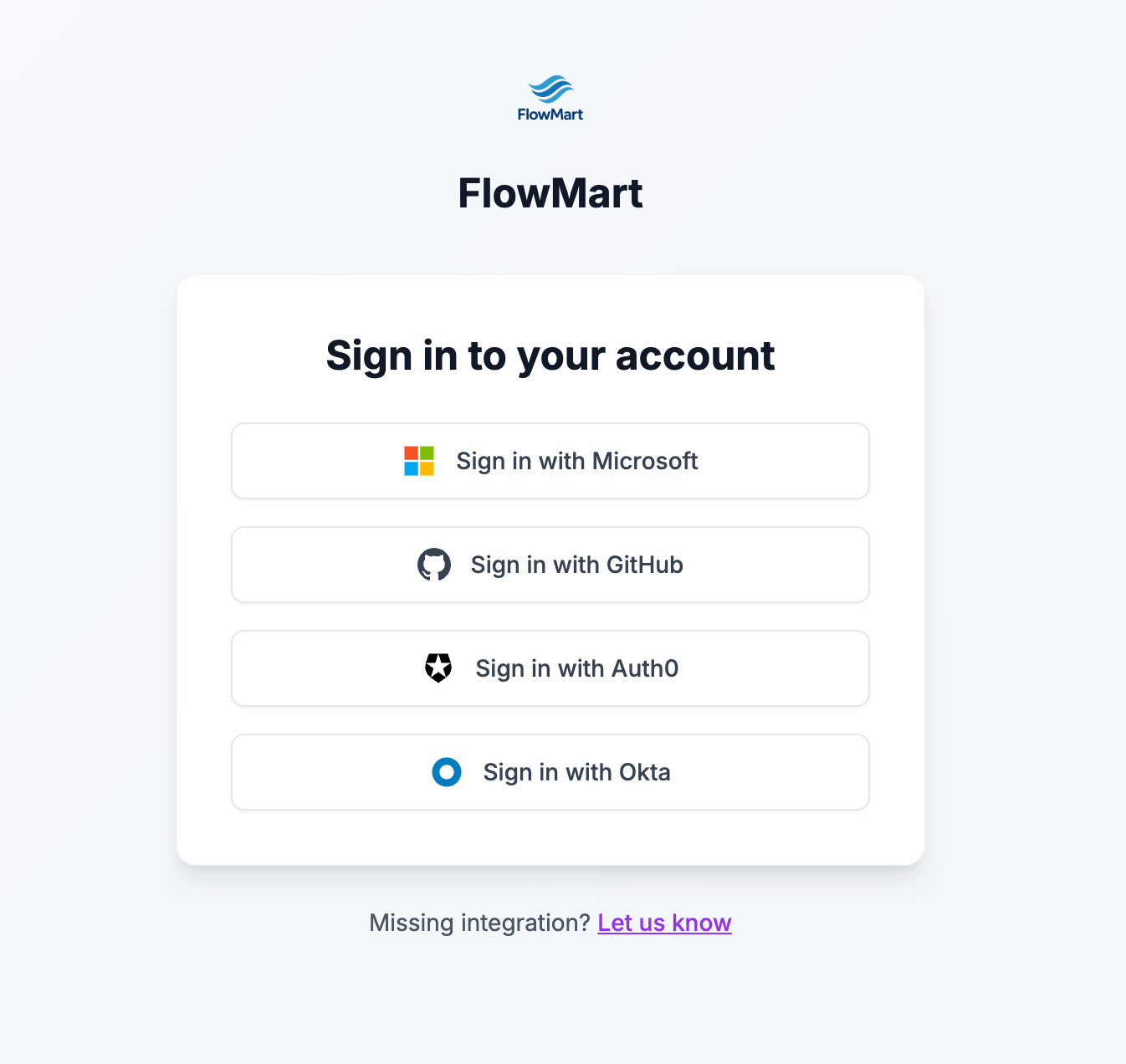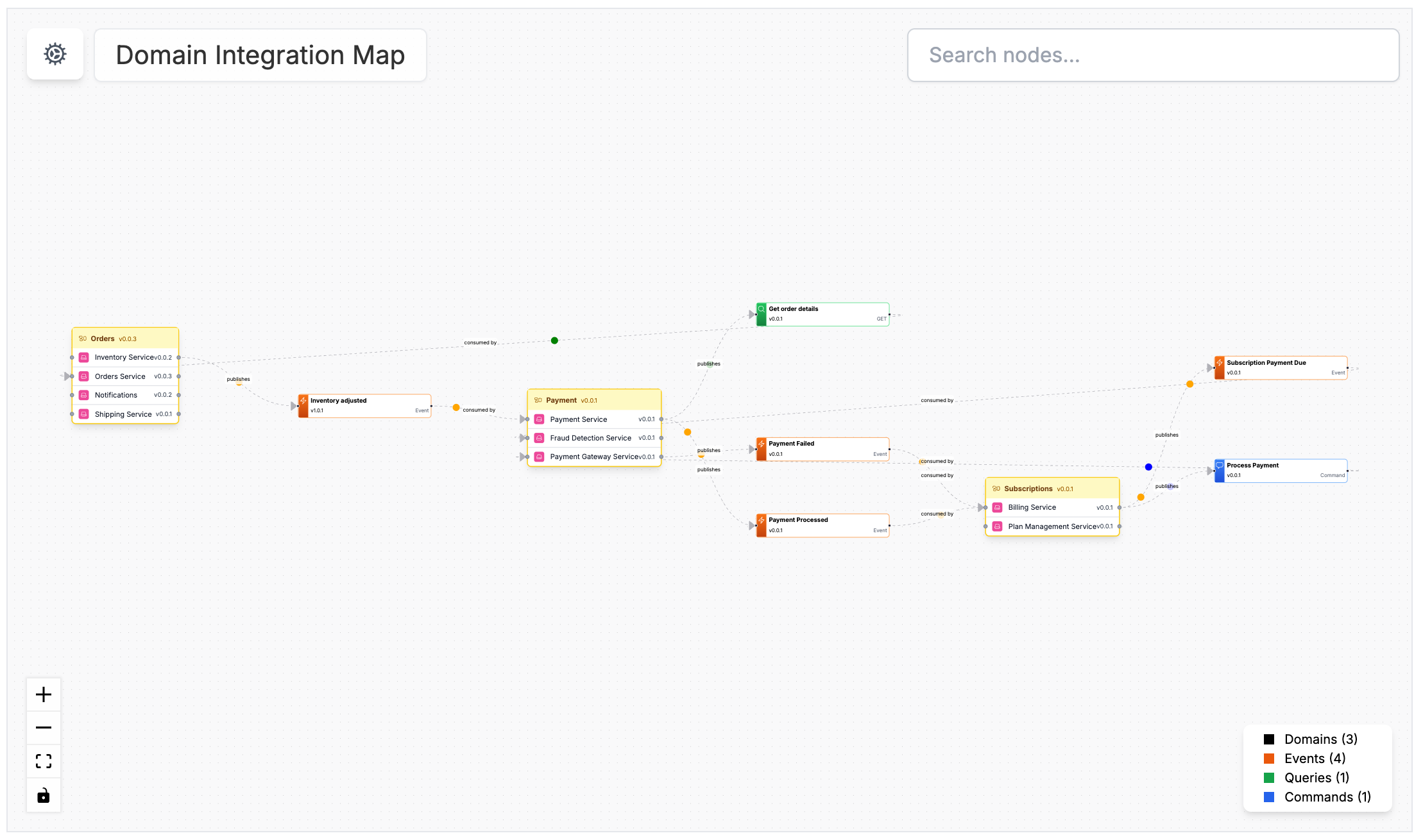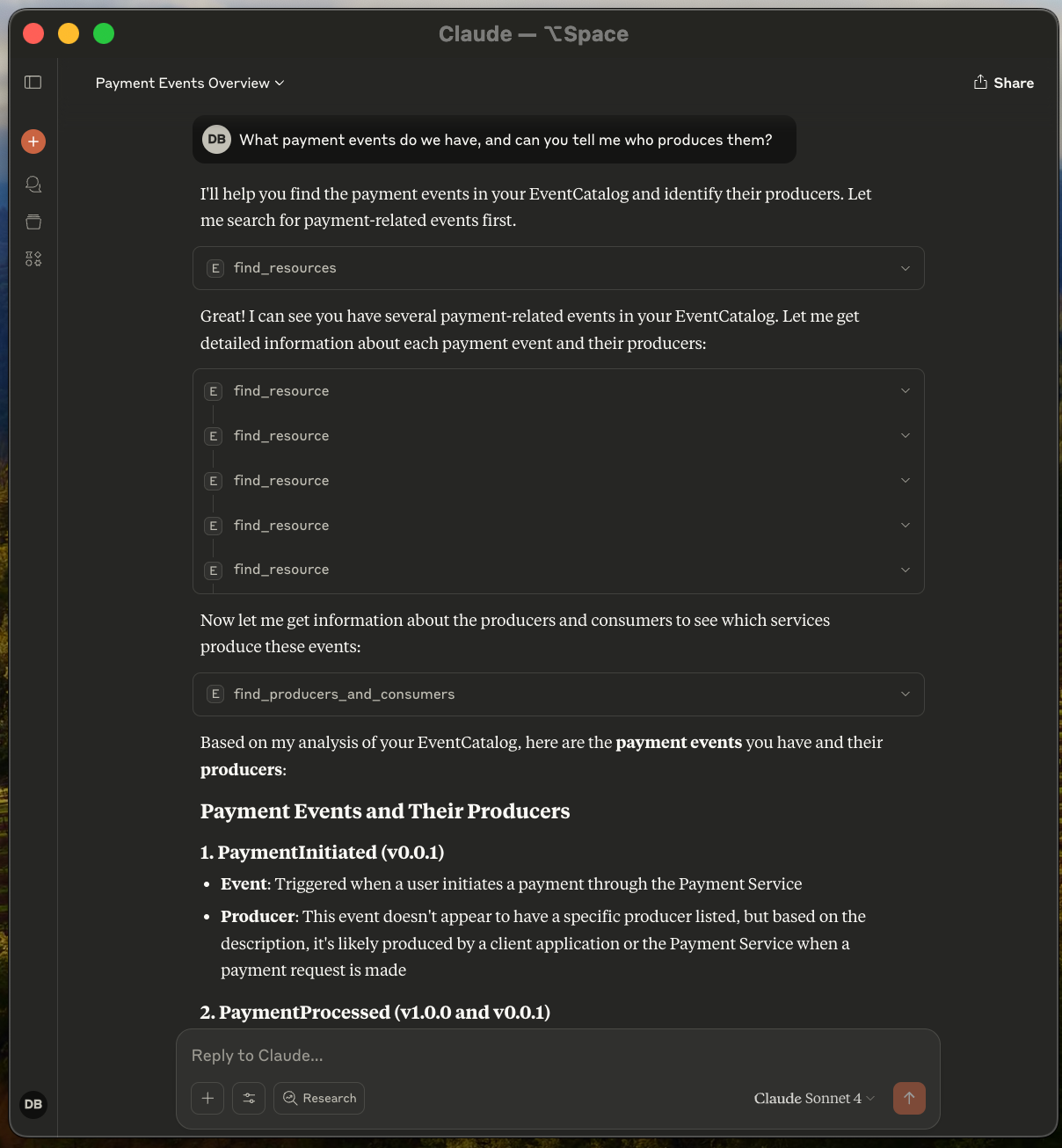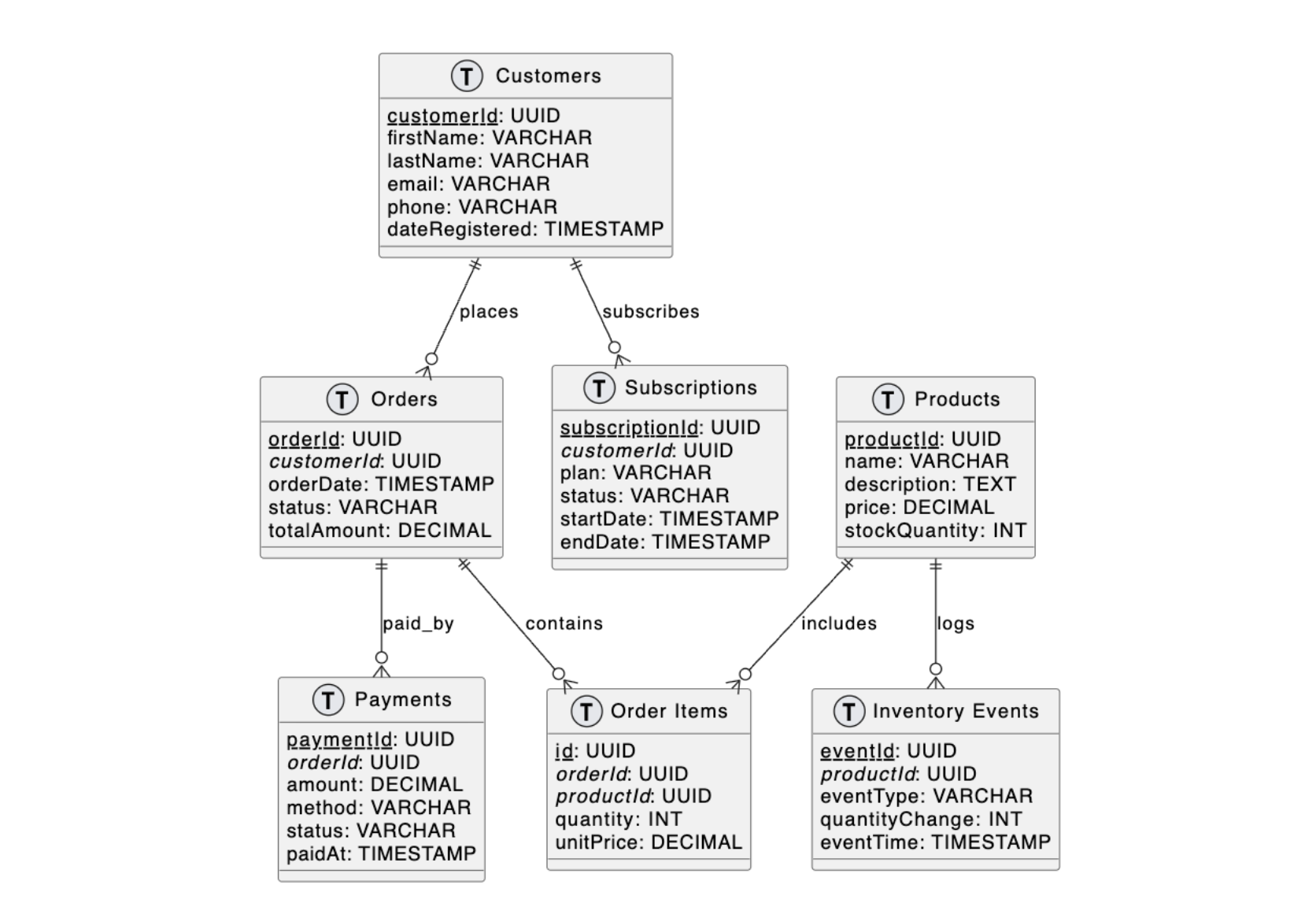Whats new in EventCatalog - June 2025
Welcome to the monthly update for EventCatalog, here you can find what’s next, how to get started, and what’s coming next.
- Authentication and Role Based Access Control
- Domain Integration Map
- EventCatalog GitHub Action
- EventCatalog MCP 1.0 release
- EventCatalog Snippets
- PlantUML Support
- AWS Glue Schema Registry integration
- Other project improvements
Authentication and Role Based Access Control
We have introduced Authentication and Role Based Access Control to EventCatalog. This allows you to secure your EventCatalog instance and control access to your resources.
EventCatalog now provides secure authentication to control access to your documentation. Whether you're a small team getting started or a large enterprise with complex identity requirements, EventCatalog's flexible authentication system grows with your needs.
To get started with authentication, you can read our quick guide in our documentation here.
Domain Integration Map
We are excited to introduce the Domain Integration Map — a powerful new visualizer designed to give you a clear view of how messages flow across domain boundaries in your event-driven architecture.
This feature highlights all messages that are produced or consumed between domains, helping you instantly spot integration events and understand cross-domain communication at a glance.
If you're building systems using domain-driven design (DDD) and event-driven architecture (EDA), this should make it much easier to track message usage and reduce the time spent mapping interactions.
The new page can be seen in EventCatalog at /visualiser/domain-integrations (see demo here).
EventCatalog GitHub Action
The EventCatalog GitHub action is a powerful tool that helps you catch issues early in your pull requests, ensuring your event-driven architecture stays healthy, aligned and governed.
The EventCatalog Action has the context of your EventCatalog, and can help you identify issues with producers, consumers, messages and much more.
The action brings AI-powered insight into your Git workflows. It uses large language models (LLMs) to automatically review changes to your EventCatalog, helping you catch issues early—before they reach production (you can pick your model and provider).
Think of it as a smart assistant for your pull requests. It doesn't just lint code—it understands the implications of your changes.
You can learn more and how to get started in our release blog post here.
EventCatalog MCP 1.0 release
You can now connect any MCP Client (e.g Cursor, Claude) to your EventCatalog instance. Version 1.0 introduces new MCP tools and features, including:
- Get resources (domains, services, messages, etc)
- Find producers and consumers for a given message
- Create flows based on your business requirements
- Review schema changes
- And much more.
When it comes to AI LLMs or Agents, context is key.
EventCatalog let's you document domains, models, messages, producers and consumers and much more. Using the MCP client, this context is given to your LLM's providing your models with the context they need to understand your architecture and domains.
With the EventCatalog MCP server you can give models the context they need to understand your architecture and domains.
The best way to try it out is to install the MCP server and connect it to your EventCatalog instance. You can get get started with the MCP in our documentation here.
Introducing EventCatalog Snippets
Keeping your documentation DRY just got easier.
With EventCatalog Snippets, you can now reuse markdown and variables across your EventCatalog documentation — whether it's domains, services, or events.
Instead of duplicating content, simply define it once and import it wherever you need it.
This is perfect for maintaining consistent, centralized information across your docs. And with variable support, you can easily customize shared content without repetition.
To get started with snippets, you can read our quick guide in our documentation here.
PlantUML Support
We have added support for PlantUML to EventCatalog. This allows you to create diagrams and visualizations of your architecture using PlantUML.
The new plantuml code block allows you to define PlantUML diagrams in your documentation.
```plantuml
@startuml
!define Table(name,desc) class name as "desc" << (T,#E5E7EB) >>
!define PK(x) <u>x</u>
!define FK(x) <i>x</i>
' ===== Core Tables =====
Table(Customers, "Customers") {
PK(customerId): UUID
firstName: VARCHAR
lastName: VARCHAR
email: VARCHAR
phone: VARCHAR
dateRegistered: TIMESTAMP
}
Table(Orders, "Orders") {
PK(orderId): UUID
FK(customerId): UUID
orderDate: TIMESTAMP
status: VARCHAR
totalAmount: DECIMAL
}
Table(Products, "Products") {
PK(productId): UUID
name: VARCHAR
description: TEXT
price: DECIMAL
stockQuantity: INT
}
Table(OrderItems, "Order Items") {
PK(id): UUID
FK(orderId): UUID
FK(productId): UUID
quantity: INT
unitPrice: DECIMAL
}
Table(Payments, "Payments") {
PK(paymentId): UUID
FK(orderId): UUID
amount: DECIMAL
method: VARCHAR
status: VARCHAR
paidAt: TIMESTAMP
}
Table(InventoryEvents, "Inventory Events") {
PK(eventId): UUID
FK(productId): UUID
eventType: VARCHAR
quantityChange: INT
eventTime: TIMESTAMP
}
Table(Subscription, "Subscriptions") {
PK(subscriptionId): UUID
FK(customerId): UUID
plan: VARCHAR
status: VARCHAR
startDate: TIMESTAMP
endDate: TIMESTAMP
}
' ===== Relationships =====
Customers ||--o{ Orders : places
Orders ||--o{ OrderItems : contains
Products ||--o{ OrderItems : includes
Orders ||--o{ Payments : paid_by
Products ||--o{ InventoryEvents : logs
Customers ||--o{ Subscription : subscribes
@enduml
```_
This will render the following diagram:
Using plantuml you can now bring more diagrams and context to your documentation. You can read more about it in our documentation here
AWS Glue Schema Registry integration
We have added support for AWS Glue Schema Registry to EventCatalog. This allows you to pull and sync your schemas from AWS Glue Schema Registry into EventCatalog.
Schema registries are great, but they lack meaning, context, business context, history and much more. This new integration let's you document your schemas in ways that aren't possible with a schema registry. Providing you and your teams with more information, visualizations, AI capabilities and much more.
You can import all your schemas, or just the ones you want to sync and use filtering to map them to your producers and consumers.
To get started with the AWS Glue Schema Registry integration, you can read our quick guide in our documentation here.
Other project improvements
- EventCatalog now supports SSR mode
- Configure EventCatalog with your environments
- Faster build times (20%-50% reduced output size)
- Ability to walk through EventCatalog Flows(see demo)
- SchemaViewer now has search and expand features(see demo)
- All headings are now clickable and linkable
- Sidebar now has better search, and collapsible buttons
What’s coming in July?
In June, we’re releasing more integrations for EventCatalog, including support for Azure messaging services, Azure Schema Registry, and Apicurio Schema Registry. These integrations will allow you to add semantic meaning to your schemas and keep them in sync with your documentation—making it easier for teams to find the information they need and maintain a shared understanding of your architecture.
Many teams use EventCatalog as a design > implement > document workflow. We’re exploring ways to make drafting messages, services, and resources directly in EventCatalog easier—and we expect to release the first version of this feature in July.
Lastly, we know many of you are eagerly waiting for EventCatalog Studio. We’re still hard at work on it and aim to release an initial version soon. Stay tuned!
If you have any questions or want to join our community of over 1150 people exploring EventCatalog and event-driven architecture feel free to join us!



